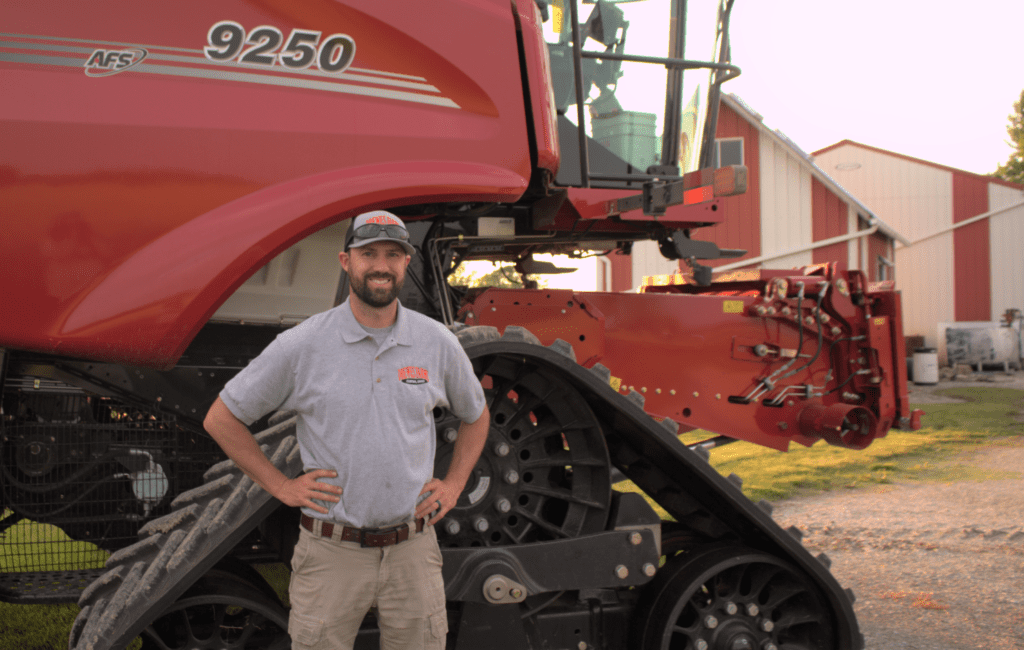Soil can help save our planet, we just need to listen to the farmers that know how
21 July 2021
When the land at Drewes Farms was first worked six generations ago, it was done with horse and plough. We replaced horses with tractors in the 20th century and added precision planting monitors to those tractors in the 21st. But underneath all this, one thing has never changed – the need to safeguard our soil.
Farmers have always understood the importance of well-managed soil. Here in Ohio, USA, and in fact anywhere in the world, it’s the basis of our livelihood: vital to the healthy land we live on; the food we put on our tables; and the opportunities we leave for our children.
Recently, interest in well-tended soil has spread to companies, investors and governments, primarily because of soil’s capacity to store carbon through the process known as soil carbon sequestration. By planting ‘cover crops’ in off-seasons and avoiding the soil-breaking practice of ‘tilling’, this storage process can be enhanced enough for a farmer (in the United States, at least) to be issued carbon credits.
This is useful for companies like Microsoft and Shopify, who are looking to buy carbon credits to reach their emission targets. By selling the carbon credit to a company, often through a carbon market, farms can earn a new revenue stream that financially rewards their care for the land.
Another promising income stream comes from programs that pay farmers for the no-till and cover-cropping practices we use. This means that we are offered cut-and-dried prices for our soil care however much carbon is stored in the soil. One example is the Bayer Carbon Program, which I advise on as part of Bayer’s Carbon Advisory Panel.
Being paid for land stewardship is an attractive idea for farmers, who already have a strong interest in keeping soil healthy and are always looking for new, agronomically beneficial income streams.
However, as I explained at a recent Producers’ Dialogue for the World Business Council for Sustainable Development’s Liaison Delegate Meeting – organized with Wageningen University & Research, the CGIAR Research Program on Climate Change, Agriculture and Food Security (CCAFS) and the Just Rural Transition — using soil to solve climate change comes with challenges. If we want producers to feel comfortable investing their time, resources, and labor into seeding the desired practices, these challenges must be addressed.
One major difficulty comes from the properties of soil itself. Soil carbon capacity can vary a lot from place to place, even within the same field. This creates uncertainty for farmers. If soil carbon measurements are lower than predicted after five years of careful cover-cropping and no-till, farmers will be left with no way to cover the costs.
More research, technical support in verification, and knowledge-sharing between farmers is needed to help them better understand soil carbon capacities and how to best use their unique soil mix.
Another challenge is the confusing landscape for selling soil carbon credits. Each of the private markets promising to pay farmers for their soil carbon works by its own rules, with different add-on requirements for soil management, payment methods, and verification standards. It often feels more like the Wild West than an organized offer for growers.
Getting your head around this setup can be confusing and discouraging. Farmers are particularly concerned that the rules could change long after they’ve signed up to sell, devaluing their sequestration and leaving them with less than they had budgeted.
While a farmer must always do their due diligence when signing up for a long-term contract, regulation may soon be necessary to ensure these markets are a straightforward, even playing field that doesn’t undersell producers.
Finally, sequestration must be sustainable in all sense. We have a rule on Drewes Farms – if a practice is agronomically, environmentally, and economically sound, we’ll use it. Without the first two, our land can’t support us. But without the last one, we can’t support ourselves. After all, if our business cannot continue to operate, there won’t be a farm to hand over to future generations.
Currently, cover cropping can cost between $30-50 an acre, a large upfront investment for a family farm. Programs like Bayer’s are a promising first step in cost-sharing, but more is needed to support us through this costly transition period.
In future, I’d like to see more companies stepping up to the plate to offer cost-sharing with producers. We shouldn’t be expected to shoulder this risk alone.
Despite these challenges, I feel positive about the future of soil carbon sequestration. It is time that food producers are recognized as a solution and rewarded for their role in maintaining the land.
But as with any farming policy, sequestration will only be successful if we listen to its practitioners – farmers. Leaders in policy and investment must always pull up a seat for producers, willing to listen and learn from our perspective.
When I took part in the Producers’ Dialogue, I video called in from Northwest Ohio, alongside farmers calling from Austria, Brazil, Colombia, France and South Africa. Technology now allows a farmer to reach policymakers and investors from the cab of their tractor, so there’s no longer any reason to have our voice missing.
Family farms like mine are ready to use generations of experience to carry out regenerative practices like soil carbon sequestration. By working with us to address our concerns, corporates, investors, and policymakers can make sure that agronomically, environmentally and economically regenerative practices grow a better food system for all.
This blog was published in partnership with Wageningen University & Research, the CGIAR Research Program on Climate Change, Agriculture and Food Security (CCAFS) and the World Business Council for Sustainable Development.
The Just Rural Transition is committed to amplifying diverse producer voices through its Insights series. The views and opinions expressed in this series are those of their author alone, and publication does not represent an endorsement from the Just Rural Transition on the positions expressed.
